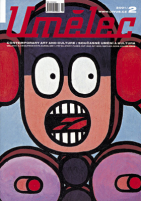| Revista Umělec 2001/2 >> The Venice Buzz | Lista de todas las ediciones | ||||||||||||
|
|||||||||||||
The Venice BuzzRevista Umělec 2001/201.02.2001 Lenka Lindaurová | news | en cs |
|||||||||||||
|
This year’s 49th Venice Biennale, directed by Herald Szeemann in his second term in office, utilized the theme “Plateau of Humankind” to show, perhaps, that contemporary art is not concerned only with shock value. In addition to the traditional national presentations at the Giardini pavilions, the Biennale last year opened a new space on the former dock space Arsenale. With its huge capacity, it was able to house many more artists than the Giardini, including the monumental Italian pavilion.
In addition to art still new and fresh, the Biennale also featured older works that had appeared in other international exhibitions, such as Manifesta 3. But individual countries refrained from presenting only familiar names — whose international reputations are relative anyway — and instead offered artists from the younger generation. Jiří Surůvka and Ilona Nemeth represented the Czech and Slovak pavilion. The two nationalities were combined in a joint project for the first time, and it was presented by the curator Katarína Rusnákova. The Biennale opened to the public on June 10, the same day the organizers announced the winning artists. The Special Prize was awar-ded to Janet Cardiff and George Bures Miller for their innovative approach in arranging the Canadian pavilion, which, due to the three-hour queue, most journalists unfortunately never had an opportunity to see. Special Prizes also went to Marise Merz of the Italian pavilion and Pierre Huyghe of the French pavilion. Winners of the Special Prize for Young Artists included Federico Hererro, Anri Sala, John Pilson and A1-53167, whose work related to social and political issues that fully reflected the main theme of the Biennale. The Golden Lion went to the German pavilion, where Gregor Schneider had transformed a kind of Totenhaus (House of the Dead) into a claustrophobic laby-rinth. The Golden Lions for Masters of Contemporary Art were given to Richard Serra and Cy Twombly. This year’s Biennale buzz-names included Mark Wallinger, Robert Gober, Gary Hill, Oleg Kulik, Ri-chard Billingham, Vanessa Bee-croft, Luc Tuymans, Ilya Kabakov, Gerhard Richter, Bill Viola, Jeff Wall, Ron Mueck… But naturally, the less familiar names were some of the most interesting. For example, Leon Tarasewicz’s minimalist installation had a more immediate and comprehensible effect than many of the sophisticated video installations. And guiding us through the Giardini’s national pavilions were golden turtles of all sizes, crawling everywhere. Their repulsiveness could not be justified, despite the ecological message they carried. The Biennale is traditionally more of an air-kissing meeting-ground with huge financial support and art as the reason to organize it. The scope is impossible to grasp, a feature emphasized this year by the number of long videos requiring concentration and time. The Venice information service continues to improve every year while services remain neglected. Infor-mation on prices, opening times, transportation, etc. can be found at www.labiennale. org. Tickets can be ordered at www. ticket.it/labiennale. The next issue of Umělec will feature in-depth reports, opinion co-lumns and extensive visual material from the Venice Biennale.
01.02.2001
Artículos recomendados
|
|||||||||||||





Comentarios
Actualmente no hay comentariosAgregar nuevo comentario